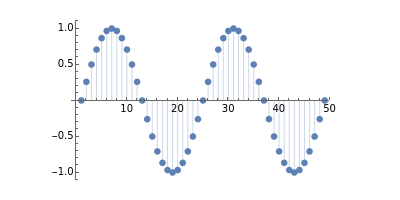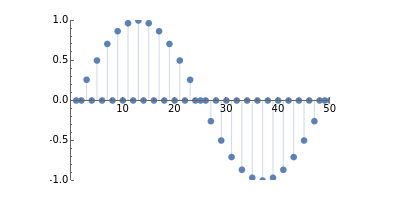Sampling a Digital Signal
Sampling a Digital Signal
Sampling data is the first step in the signal processing of wave forms coming from radar, submarine detection, earthquakes, seismic oil exploration, etc. Up-sampling and down-sampling are the basic operations in multirate discrete-time systems.
The bottom part of the figure shows up-sampling and down-sampling by an integer factor of the signal at the top. For the up-sampling process, equidistant zero-valued samples are inserted by the up-sampler between each consecutive sample of the input sequence .
L>1
L-1
x(n)
Conversely, the down-sampling operation on the input sequence consists of keeping every sample of and removing the others.
th
L
x(n)
Details
Details
The up-sampled sequence is developed according to the input sequence :
y(n)
x(n)
y(n)=
x(n/L) | n=0,±L,±2L,…, |
0 | otherwise |
The sampling rate of is times larger than that of the original sequence .
y(n)
L
x(n)
The down-sampled sequence is developed according to the input sequence :
y(n)
x(n)
y(n)=x(nL)
Here the sampling rate of is that of the original sequence .
y(n)
th
1
L
x(n)
S. Mitra, Digital Signal Processing, 3rd ed., New York: McGraw-Hill, 2005.
External Links
External Links
Permanent Citation
Permanent Citation
Siva Perla
"Sampling a Digital Signal"
http://demonstrations.wolfram.com/SamplingADigitalSignal/
Wolfram Demonstrations Project
Published: September 28, 2007

